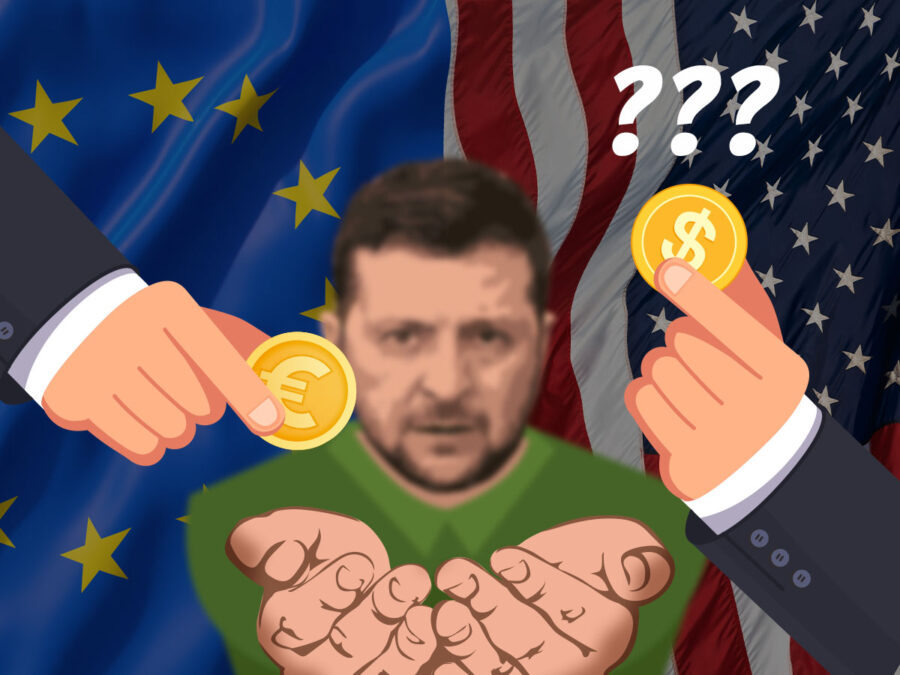
In the run-up to the US presidential elections in November 2024, more and more political research institutes are releasing analytical materials according to which the US would prefer to continue supporting Ukraine against Russia, but only with weapons, while financial support for Ukraine would be delegated to the European Union. However, such an option does not satisfy not only Kyiv and the EU but even certain US circles.
Recently, the prestigious Kiel Institute for World Economy published its analysis – https://www.ifw-kiel.de/publications/news/europe-has-a-long-way-to-go-to-replace-us-aid-large-gap-between-commitments-and-allocations/ – which claims that the total European aid for Ukraine has long overtaken the American aid – not only in terms of commitments, but also in terms of specific aid allocations sent to Ukraine. Moreover, the approval of the EU’s Ukraine Support Facility guarantees further financial assistance. However, the gap between EU commitments and allocations remains very large. To fully replace US military assistance in 2024, Europe would have to double its current level and pace of arms assistance, the institute estimates.
US commitments concerning Ukraine aid have basically stopped since the US Congress failed to adopt any new support packages. The last remaining funds for US military assistance have been depleted by end-2023. In total, the US has allocated around €43 billion in military aid since February 2022. Though in mid-February the Senate voted for a package bill which provides US$61 billion for Ukraine, the Chamber of Representatives went on break until the end of February without voting for the package bill. ’It is highly uncertain whether the US will send further military aid in 2024.’, experts of the Kiel Institute for World Economy note.
According to the assessment of the Kiel Instiute for World Economy, in contrast to the decrease in American aid, the European one continues to grow both from the point of view of commitments and the aid which was allocated or is supposed to be sent to Ukraine in the near term. However, there is a significant gap between promised and actual aid flows, the Institute’s assessment points out. As of 15 January 2024 the EU and its member states have committed a total of €144 billion in aid, but only allocated €77 billion of this for specific purposes. The volume of total financial aid allocated by the EU (€34 billion) is nearly the same as the total allocated military aid (€35.2 billion). The relative weight of financial vs military have remained roughly similar since early 2022.
’I hope the United States of America stays on track’, President of Ukraine said during his visit to Germany, adding that he believes ’there will be a pragmatic American approach to the fact that we are protecting the security of the world’.
However, he admitted that ’there are always risks’, particularly due to pressure and the electoral process. If problems do arise with US aid, Ukraine can rely on the European Union’s full support. ’We are not just counting on Germany – we are counting on the European Union’, Zelenskyy added. (Germany remains the largest European military donor, with a total of €17.7 billion in military commitments since February 2022, of which €9.4 have now been allocated to specific military packages sent to Ukraine.)
The fact that CIA Director William Burns published in Foreign Affairs his essay on Ukraine (’Spycraft and Statecraft’, published January 30, 2024, https://www.foreignaffairs.com/united-states/cia-spycraft-and-statecraft-william-burns) is a clear indication that there are serious disagreements in the US over continued support for Ukraine.
’The key to success lies in preserving Western aid for Ukraine. At less than five percent of the U.S. defense budget, it is a relatively modest investment with significant geopolitical returns for the United States and notable returns for American industry.’, Burns emphasised. He believes that ’for the United States to walk away from the conflict at this crucial moment and cut off support to Ukraine would be an own goal of historic proportions’.
’It is a relatively modest investment with significant geopolitical returns for the United States and notable returns for American industry’ – this sentence completely unmasks Washingtons’s interest-oriented policy toward Ukraine based on three pillars:
o the operation should be and should remain low-cost,
o with a minimal budget, Washington would like to gain as much geopolitical benefit as possible,
o one of the main reasons why the US should continue arms supplies to Ukraine is profit.
President Zelenskyy’s reaction followed in mid-February. After talks with US Vice-President Kamala Harris on the sidelines of the Munich Security Conference, answering journalists’ questions Zelenskyy said: ’We are not considering alternatives today because we count on the United States as our strategic partner and that it will remain a strategic partner. (…) Do I think that this is a treacherous position? No, because I don’t think our strategic partner can afford not to support Ukraine. I don’t see an opportunity for a strategic partner to take such a position.’
The fact that the ideas outlined in Burns’ article and Zelenskyy’s above statements are so consistent not only means that the Ukrainian President and the CIA are still on the same side for the time being, but also indicates that Burn’s CIA represents only one opinion on Ukraine in US government circles – the side that must win in November if Washington wants to see the geopolitical returns Burns mentiones in his essay in Foreign Policy.
In this game, Zelenskyy has not been given an autonomous part. He is just a necessary puppet who, after two years of war, is still interested in continuing the war in Ukraine, causing enourmous suffering to the Ukrainian people and dragging the EU into a financial aid spiral with unforeseeable consequences not to mention the risks of arms supplies.
Leave a Reply